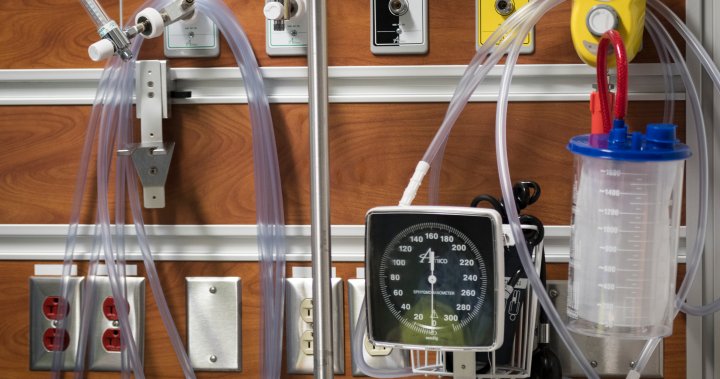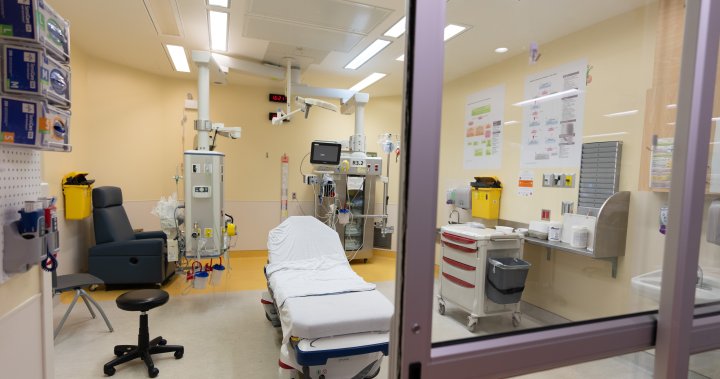1 in 3 children are now nearsighted globally. What’s behind the rise? – National

[ad_1]
A new study is warning that children’s eye health around the world may be on the decline.
Nearly one in three were nearsighted in 2023 and that’s expected to rise in the next two decades.
The study, published Tuesday in the British Journal of Ophthalmology, analyzed the results of 276 studies that involved more than 5.4 million children from 50 countries across six continents.
According to the numbers, those with nearsightedness rose from 24 per cent in 1990 to almost 36 per cent as of last year. But projections by the study’s researchers showed the number could hit almost 40 per cent in 2050.
Though the researchers said the rise in the rate of myopia has been gradual, the study said the increase was “notable” after the height of the COVID-19 pandemic, pointing to countries implementing lockdowns that sent many children to learn online indoors.
It said there has been concern a decrease in outdoor activity and an increase in screen time due to these “extended periods of staying indoors” may have had a potential negative impact on eye health.
What is myopia and who is at risk?
Nearsightedness, also known as myopia, is a condition in which near objects can be seen clearly but distant objects are out of focus, according to the Canadian Association of Optometrists.

Get weekly health news
Receive the latest medical news and health information delivered to you every Sunday.
The study notes myopia typically starts in early childhood and “tends to worsen as individuals progress from childhood to adolescence and eventually into adulthood,” with younger children more susceptible due to environmental factors.
Children in urban areas were also found to be at a higher risk of myopia, the study found, with girls more likely than boys to develop it.
Depending on the country, the research found the estimated prevalence varied across continents, with Asia exhibiting the highest at about 35 per cent and Latin America and the Caribbean on the opposite end sitting at almost four per cent.

In terms of countries with available data, the study found myopia highest in Japan and lowest in Paraguay. Researchers go on to note that Japan, the Republic of Korea and Russia topped the list of children who were nearsighted at 86 per cent, 74 per cent and 46 per cent, respectively.
According to the data, Canada sat at about 17 per cent.
There are things, however, people can do to try and prevent nearsightedness.
Researchers stressed the need for youth to “develop the habit of regularly practicing eye-protective measures.”
This includes increasing physical activity and decreasing the time spent watching TV, playing video games and being online, adding that more action needs to be taken by governments.
“In view of the rising prevalence of myopia in school-age children, government health administration departments should implement policies aimed at reducing the burden of excessive homework and off-campus tutoring on young students,” they wrote, adding that regular physical examinations should be conducted and early detection and treatment promoted.
According to the Canadian Association of Optometrists, if your child is diagnosed, glasses or contact lenses are the most common form of vision correction, though the prescription may change or stay the same as they grow.
As a child grows, some people with myopia may consider surgery to reduce or fix myopia, ranging from LASIK to artificial lens implants, though typically these can only be accessed once you are 18 years or older.
For those considering such surgeries, the Alberta government advises if your vision doesn’t bother you and you have no driving issues or safety concerns, treatment is not a necessity.
“If glasses or contact lenses are inconvenient for your work or lifestyle, surgery may be a good choice,” the government writes on its health information website. “But nearsightedness is not a disease, and a nearsighted eye is otherwise normal and healthy.”
The government adds people should weigh the desire to not have to wear glasses against the risk and cost of surgery, noting that there is also the potential you may still have to wear glasses or contacts after the procedure.
© 2024 Global News, a division of Corus Entertainment Inc.
[ad_2]
Source link







